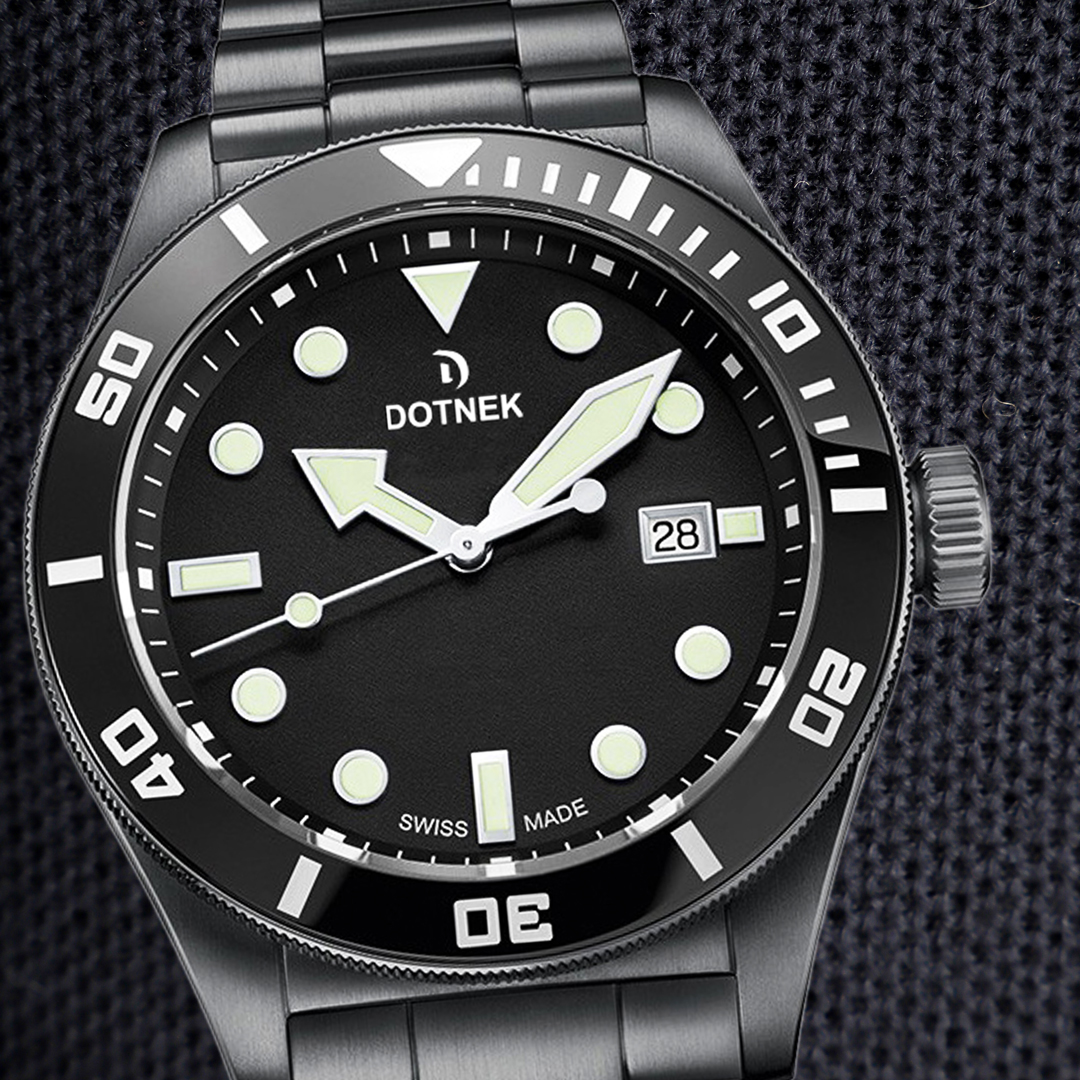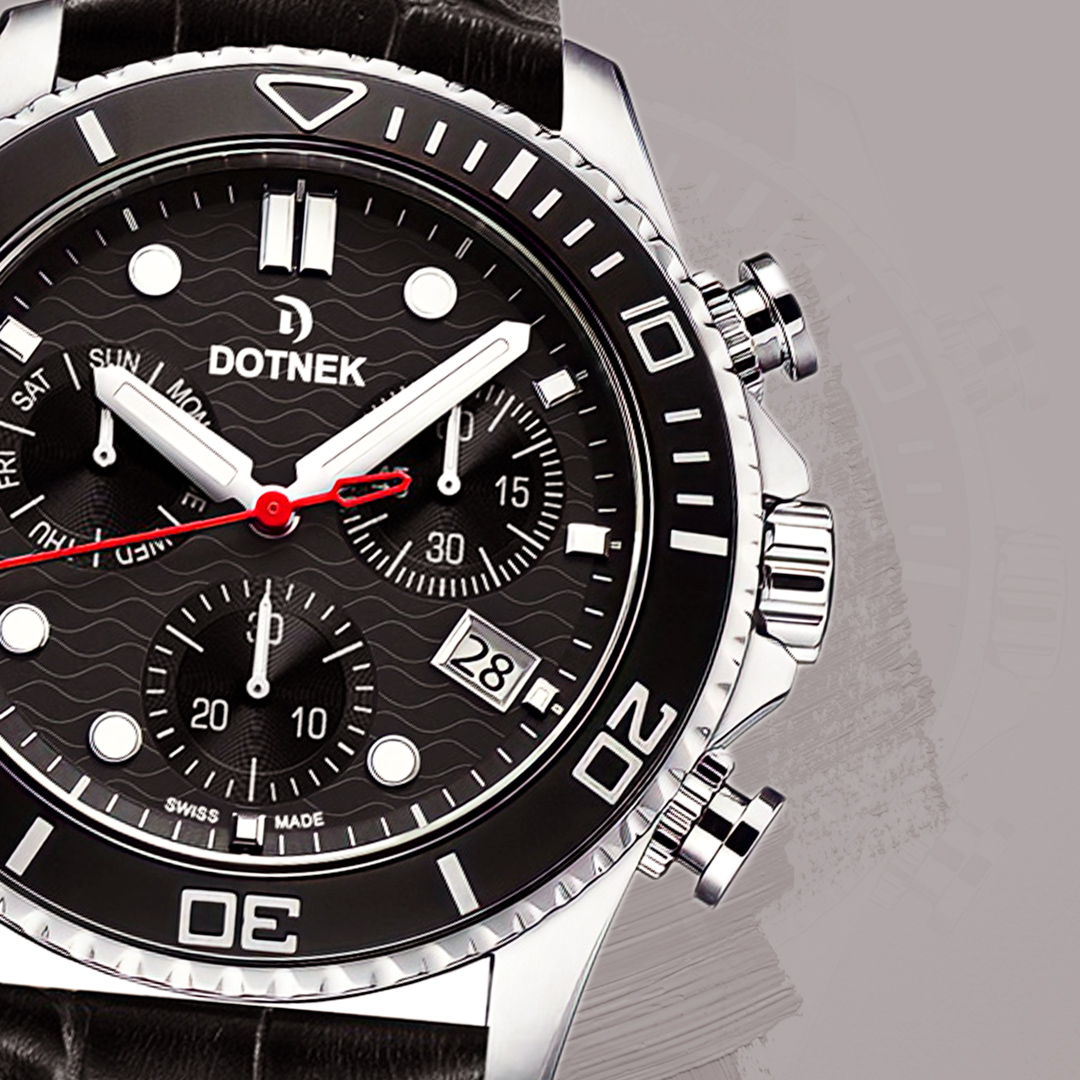Chronographs for mechanical watches are among the most popular and appropriate types of watches that can be used to determine the exact time and other additional uses. These types of watches have the best capabilities and features that can be used to determine the precise time. But many people may not know how to use them and do not know how to use them. Use. Of course, mechanical chronograph watches do not have the same type and have different styles. In this article, we want to point out their different types and how to use them to know what kind of mechanical chronograph watches are available.

Is it a chronograph?
To be able to explain the subject to you in the best possible way, it is better to first explain the meaning and concept of the chronograph to you. A chronograph is a tool that can be used to determine the amount of time spent. For example, we can say to measure the time between moment A and moment B to calculate. Usually, a person who wants to calculate and check the time between one moment and another presses the start button from the beginning until he can measure the time. After the desired time has elapsed, he can shove the end button again until the measurement is completed to complete the time calculation process.
A chronograph is a feature that can be used to calculate a specific time, even if used in digital or mechanical watches.
Once we have explained the meaning and concept of the chronograph, you may think to yourself that the purpose and vision of the chronograph are the same as the chronometer and that both of them can do the same thing. To answer this question, we say yes, that is true; the meaning and even the function and activities of the chronometer are the same as the chronograph and can perform similar actions. But there is a significant difference: the chronograph is used as a feature to calculate a specific time in mechanical watches, not for watches and digital instruments. So, in a nutshell, we can say that the chronograph can be used to calculate the specified duration of mechanical watches, and this is where the chronometer can be used for digital watches.
What is the difference between a chronograph and a chronometer?
As we have said, the difference between a chronometer and a chronograph is that a chronograph can be used to calculate a specific time in a watch with mechanical motion, and a chronometer can be used for digital watches or special time-measuring tools. Their meaning and function are the same, and they do the same thing, but where they are used is different, so they are different. In other words, a chronograph is a physical mechanism that can be used for hours with mechanical movements, and a chronometer is a device for measuring time. It can also be used in a digital watch.
The exciting thing about watches is that each mechanical watch may have a second increase or decrease in time and an increase or decrease of about 10 seconds during a day. These 10 seconds of decreasing or increasing the time can cause a lot of time changes during a week or even a month, in which case your watch may not show you the exact time. To solve this problem, the capability and feature of the chronograph are used in such a way that the chronograph tries to reduce the amount of these errors or the time difference that increases or decreases with its mechanism. Of course, chronograph watches are considered chronograph watches when they are 4 seconds different from the tests performed. If they have a difference of more than 4 seconds and increase or decrease the seconds, then it has a problem because the chronograph watch should not differ by 4 seconds.
Of course, this amount is approved by AKA COSC, one of the most official and well-known Swiss institutions and companies. Of course, these are the most formal institutions, and companies that all watch companies must have their watches approved by the company and the institute after they have produced them before selling them. After that, they can sell their watches. Even the production company. The manufacturer of the Rolex watch also sends its components to COSC for testing and approval after it is manufactured, until it obtains permission from it, after which it can sell the watches.
Chronograph and its history
Above, we talked about what a chronograph is and what it is used for, and in addition, we spoke about the difference between a chronograph and the term chronometer and what each of them means. In this section, we want to tell you about chronograph history. Chronograph in the word denotes the writer of time and is derived from the Greek word Chronos meaning time, and the Greek word graph, indicating writing, which in general means chronograph means the writer of the time.
First Design and Commission
The first chronograph watches were made by a man in 1821 who used the watch to calculate time for equestrian competitions accurately.
The exciting thing about watches is that each mechanical watch may have a second increase or decrease in time and an increase or decrease of about 10 seconds during a day. These 10 seconds of decreasing or increasing the time can cause a lot of time changes during a week or even a month, in which case your watch may not show you the exact time. To solve this problem, the capability and feature of the chronograph are used in such a way that the chronograph tries to reduce the amount of these errors or the time difference that increases or decreases with its mechanism. Of course, chronograph watches are considered chronograph watches when they are 4 seconds different from the tests that are performed. If they have a difference of more than 4 seconds and increase or decrease the seconds, then it has a problem because the chronograph watch should not differ by 4 seconds.
Of course, this amount is approved by AKA COSC, one of the most official and well-known Swiss institutions and companies. Of course, these are the most formal institutions, and companies that all watch companies must have their watches approved by the company and the institute after they have produced them before selling them. After that, they can sell their watches. Even the production company. The manufacturer of the Rolex watch also sends its components to COSC for testing and approval after it is manufactured, until it obtains permission from it, after which it can sell the watches.
Chronograph and its history
Above, we talked about what a chronograph is and what it is used for, and in addition, we talked about the difference between a chronograph and the term chronometer and what each of them means. In this section, we want to tell you about chronograph history. Chronograph in the word denotes the writer of the time and is derived from the Greek word Chronos meaning time, and the Greek word graph, indicating writing, which in general means chronograph means the writer of the time.

First Design and Commission
The first chronograph watches were made by a man in 1821 who used the watch to calculate time for equestrian competitions accurately.
The first chronograph watch, produced many years ago to calculate the duration of an equestrian race, was by Léon Breitling, who attempted to provide a means by which he could use it to calculate shorter durations, resulting in the production of watches. The first chronograph was made, followed by the son of Léon Breitling, also known as Gaston. He advanced the profession and produced and offered more professional and advanced chronograph watches than the previously created chronograph goggles. The first chronographic watch Which was prepared was Breitling, which was produced and used as Breitling. The watch made by Gaston could provide a watch that would record the Vitesse. The watches that were prepared attracted the attention of the police so that they could use them to record the unauthorized speed of drivers and be able to use them to identify drivers whose rate is unauthorized. Gaston was also able to produce the first wristwatch chronograph watches. Because in the grips, people could not find a safe and secure place where they could take out their pocket watches and see the time. Gaston designed the first chronograph watches so that people at war could easily see the exact time without needing a safe and quiet place to see time.